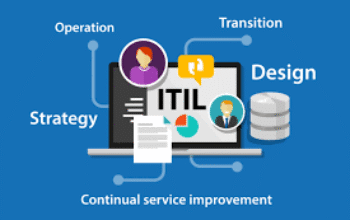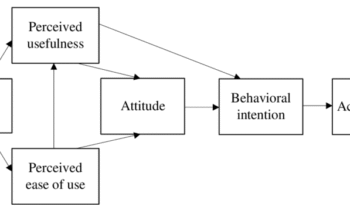Warganet – By increasing companies, many leaders face the challenge of encouraging the culture of responsibility. However, small businesses rely on individual contributions, lack of responsibility is a significant threat to their safety.
This article investigates how the strategic performance management canonize your work, helping you set clear expectations, encourage the results of the owner and diskmillable. If you are going to grow fast or just want to optimize your team’s performance, these views will guide you in developing a culture of responsibility that drives your work forward.
Performance Management For Small Business

Small businesses should begin implementing basic performance management skills during the Greiner head leader, when the Director General initiates the delegation with the managers and the direct contact of the employees is reduced. As the work grows and faces a “control crisis”, a more comprehensive system (including formal analysis and metrics) is required.
Examples Of Performance Management Systems: A Deep Dive
Although the Greiner’s curve provides a policy, the good time of time also depends on factors such as managing business needs. Many companies begin to formalin these processes about 20-30 employees, significantly improves them when they reach 100-150.
The performance management system is a comprehensive system that includes processes, frameworks and tools designed to improve the efficiency of individual employees and organizations throughout the measured and transparent performance results.
The main purpose of establishing a performance management system is, of course, achieving the strategic goals of the organization and the overall success. This can be realized when the company eases a high performance culture at all levels, characterized by the following characteristics:
The leaders inspire and motivate their workers, who have submitted a significant impact on organizational and individual performance. Knosno, employees should feel a strong connection between their own future and the company’s path, which finds inspiration to this alignment. In addition, it should be driven by active motivation, desire to contribute anything that contributes to the necessary outcomes.
How To Select The Best Human Resource Software For Your Small Business In 2024
Employees show relationships and enthusiasm in their work and the workplace. People seek purpose and meaning in their work; They also want to support managers who can train them to achieve their full potential and price of positive relationships with colleagues. Otherwise, they just go through the movements.
A strong way of thinking of growth cultivated throughout the organization. This suggests that the company encourages change openings, with a significant component of employees who are actively looking for new ideas based on internal and external expertise and active knowledge of their teams.
The culture of open communication and trust dives at all levels of the organization. When employees feel reliable and psychological, they are more authorized, ready to take calculated risks, with the ability to learn properly from mistakes and encourage to contribute to their best work.

In the early stages of organizational development, these aspects were achieved through direct influence and leadership management. However, as the organization grows, a stable and well -established system is required to maintain and replace these values.
What Is Sales Performance Management? Guide For Smbs
The planning phase, which drives the performance management cycle, focuses on promoting clear expectations at all levels of the organization. This phase results in meaning and documentation:
Incorporating an active employee into the planning process is important. Different frames such as OKRs, smart targets and KPIs can be used to set the target. However, the most critical outcome has achieved alignment between management and employees about the expected results, with the basic documentation of these expectations.
The next stage involves monitoring the development of goals and encouraging improvement. The main goal is to provide continued feedback based on development and timely adjustment to ensure compliance with organizational priorities. However, it is equally important to maintain balance and prevent micro-prri. This can be achieved through regular reviews and one at a meeting. For cases where employees are significantly caught behind their goals, performance promotion plans (PIP) can be carried out to get them back to the road.
Performance review and subsequent prizes are the final stage and it is important to encourage employees to implement future goals and show the company’s commitment to occupy fair assessment. At this stage, management should clearly communicate that the achievements and behavior recognized and rewarded, as well as what actions they consider to be unacceptable. Various tools can be used for recognition and award, including salary adjustments, promotion (increases), additional time (PTO), bonuses and other forms of recognition.
Pdf) Performance Management Problem Of 4 Smes: Towards A Performance Resolution
The development of performance management systems should begin with less formal access, the one who still establishes clear expectations on the team. This includes determining the direction of the team, in which the consequences are not achieved by goals, recognizing achievements when addressing goals and encouraging feedback culture.
Identify vision, mission and strategic goals: clearly express the vision, mission and strategic goals of the company. Talk about this during a meeting with all hands and make it easily accessible to all employees (e.g. by a page for shifting or internal resources of the company). It allows a common understanding of the entire direction of the company.
Promote the basic rules: clearly determine what happens when the goals are met and where the process is not achieved. It sets expectations and provides a framework for responsibility.

Cultivate Comment: Encourage regular and constructive feedback between team members and manager. It creates a constant environment in improvement and open communication.
Solved Lawrence, The Ceo Of A Small Business, Wants To
Find out the best planning cycle for your company, given how often the goals or contexts of the business can change. The most common cycles are quarterly and annual. The quarterly cycle provides more agility and adaptation, while the annual cycles provide longer focus.
Plan company level goals and cascade at team level goals for upcoming planning. Use frames such as pipes or smart targets to ensure clarity and usability. The classification of team discussions leads to confirmation of the feasibility of the aspirations provided by resources available. This ensures the synchronization and purchase of team leaders.
Discuss with the managers the frequency and content of the regular meeting of one with the one with direct reports. These meetings should be used to update the development, comment, training and discussion of career development.
Plan a formal feedback feedback at least quarterly with each direct report. These conversations provide a structured opportunity for overall performance, planning and solving any performance problems.
11 Best Sales Performance Management Software For Small Business
The performance management system is a range of processes, frameworks and tools designed to improve the efficiency of individuals and organizations as a whole through measured and transparent performance results.
It usually includes the processes of setting up, monitoring and organizing goals and goals at different levels of the organization, providing feedback and training, implementing performance and interaction, recognizing and rewarding the Exclusive successes.
The performance management system is a range of processes, frameworks and tools designed to improve the efficiency of individuals and organizations as a whole through measured and transparent performance results. It usually incorporates processes of setting, monitoring and organizing goals and goals at different levels of the organization, providing feedback and training, implementing performance and engagement assessment, recognizing and rewarding the breakthrough success. Click on Continue to join or sign in as a user agreement, Privacy Policy and Cookie Policy.

Performance management is important, but the process is often misunderstood in many organizations, especially in small businesses. After more than 30 years in HR, I have seen performance views can build a powerful, passionate team or create failure and shutdown. Recent research has revealed that 57% of employees were felt by their colleagues during the performance review, and 62% of the blindness of the comments they received. These statistics suggest that many organizations lack a label in their performance management processes.
What Are Smart Goals?
As leaders of the company and business -owned, we have the opportunity to shape performance management processes to match organizational goals, while motivating and encouraging our employees. We explore ten common traps to prevent performance management, especially for small businesses.
One common mistake I have seen is too bad to rely on annual performance reviews. Although these criticism offers a broad overall -the -employee performance, they occur rarely provide significant, timely feedback. Gallup studies have found that only 14% of employees strongly agree that their performance reviews inspire them to improve. This low number indicates that only annual reviews are not sufficient to drive motivation and improve performance.
Moreover, traditional annual reviews are becoming obsolete. Companies have moved from strict, former estimates and towards ongoing feedback models. This shift is not only frequency, but also in the creation of a culture of current development, and not only assess the final performance. Moving to more frequent feedback mechanisms, such as quarter reviews or even monthly checks, gives managers to deal with problems, because they quickly and recognize the accomplishments, they keep employees engaged and engaged. A owner of small companies I have seen a significant increase in employees’ morality and productivity just by moving to monthly checks.
The second big trap is the absence of a clear, objective measure of performance. When employees are unsure of what they expect, their efforts often disagree with the goals of the organization. This non -compliance can lead to lower productivity and more difficult business results, as well as confusion, failure and exclusion of employees.
Buy Performance Management: A Handbook For Small Business Banks And Microfinance Institutions Book Online At Low Prices In India
The way to oppose it is to produce wise (specific, measurable, achievement, with -time, time) goals for each employee. Clear metrics serve as a folder for employees and provide a fair basis for assessments. I remember working on a small production business where we implemented smart targets for each paper. (red)













